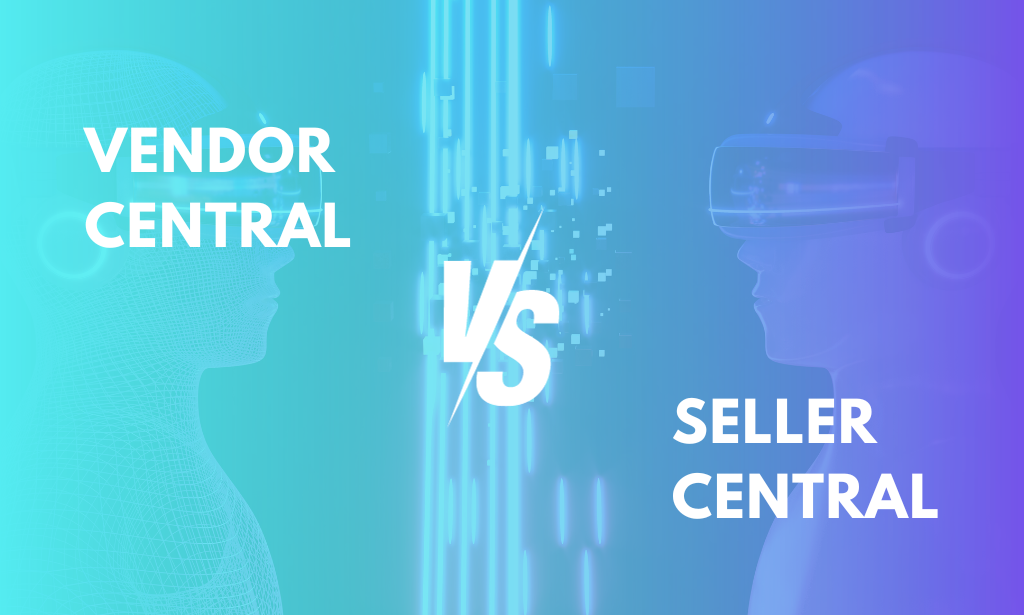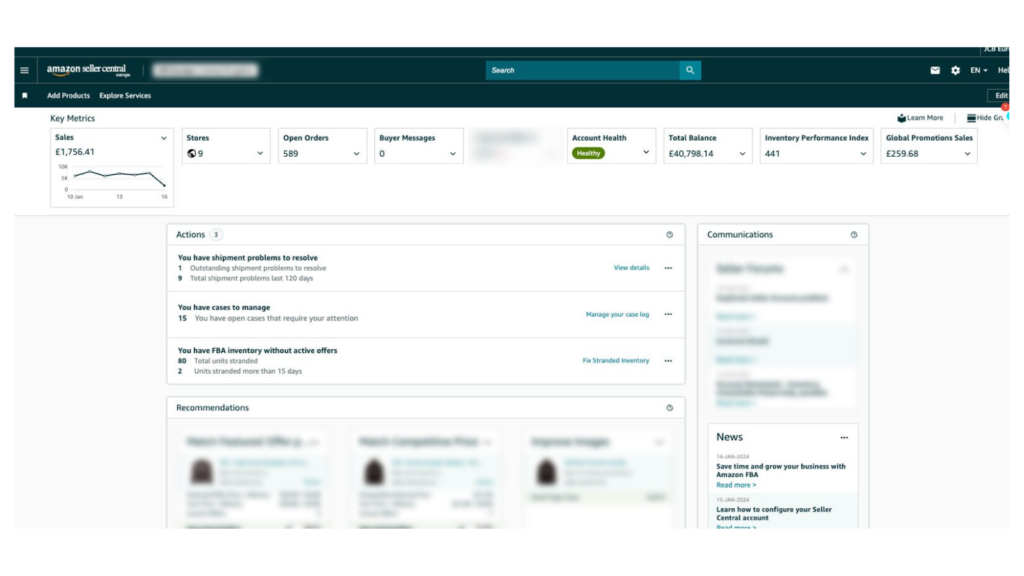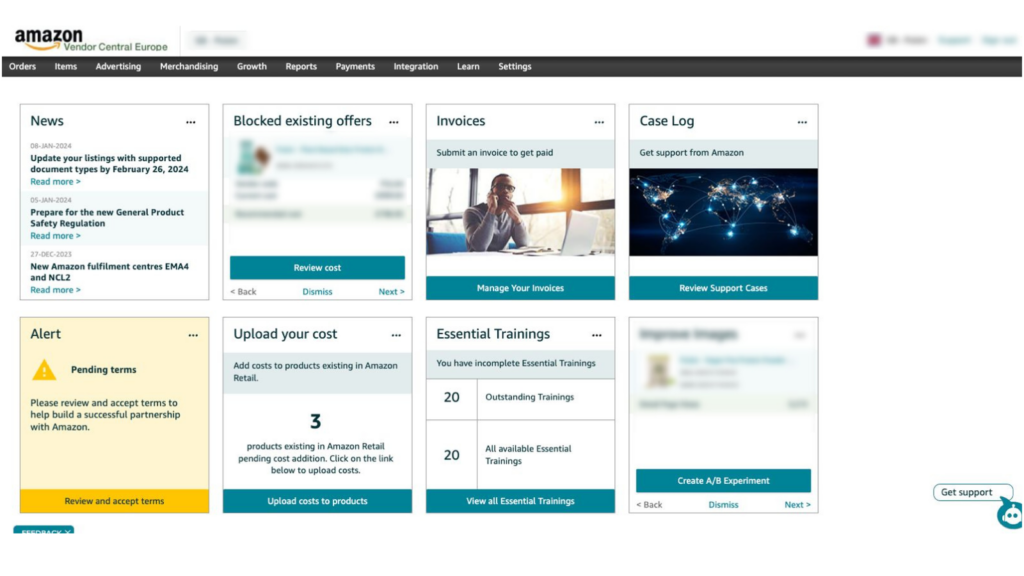
Vendor Central Vs Seller Central – Amazon’s Business Models Unveiled
At Market Rocket, we recognise the pivotal role a tailored Amazon strategy plays in harnessing the vast potential of the online marketplace. Our expertise is not just in guiding you through the myriad of options available on Amazon but in aligning these choices with your business’s specific needs and aspirations. Whether you’re at the cusp of launching your brand on Amazon, deliberating over the most profitable and supportive growth pathway, or contemplating a shift from one business model to another, our team brings a wealth of experience to the table.
For those brands particularly aiming to regain control over their brand, revenue, and time, Market Rocket offers specialised insight. Our expertise becomes invaluable if you’re considering transitioning from Vendor Central to Seller Central. We understand the nuances and challenges of such a shift and are adept at navigating these changes seamlessly. Our support extends beyond just the strategic; we delve into operational, logistical, and marketing aspects, ensuring a smooth and successful transition that aligns with your brand’s long-term vision and objectives.
Understanding the nuances of Seller and Vendor Central is key to any brand’s success. Market Rocket is here to provide comprehensive guidance, ensuring you make an informed decision that aligns with your brand’s goals. Let’s explore the full spectrum of these models, covering all aspects, especially the critical considerations for both platforms.
Amazon’s Retail Business Models: Detailed Overview
Seller Central: Direct Engagement with Customers
Sellers sell directly to customers through Amazon’s retail programs like Amazon or Amazon Business. They may use fulfilment solutions such as Fulfillment by Amazon (FBA), Merchant Fulfilled Network (MFN), or Multi-Channel Fulfillment (MCF) to ship products.
Fulfillment Flexibility: Options like FBA, MFN, or MCF cater to different logistics needs.
Seller Central Tools: Manage product listings, monitor performance, handle finances, and more.
Global Selling and Educational Resources: Expand worldwide and access learning materials through Seller University.
Stock & Revenue Ownership: As a seller, you own 100% of your stock and sales.
Seller Central enables brands to:
Easily create and modify product listings with greater control over product detail pages and the overall customer experience
Track performance metrics
Manage inventory and finances
Access Seller University for educational resources
Critical Considerations for Seller Central
Pros:
Open to anyone
Control of the seller account
Sell directly to Amazon’s customers
Flexible logistical options
Quick payment terms
Brand controls retail pricing and messaging
Detailed analytical insights
Flexibility in managing inventory
Limited penalties or chargebacks
Cons:
Fulfillment and referral fees
Complexities in managing FBA, SFP, or MFN
Amazon Seller Central: Fulfilled by Amazon (FBA), Seller Fulfilled Prime (SFP), or Merchant Fulfilled Network (MFN)
As a third-party seller on Amazon Seller Central, you have three options for fulfilling your orders. Fulfilled by Amazon (FBA) is the service where Amazon stores and fulfils your orders from the Amazon warehouses. They process millions of orders per month through this service on behalf of third-party sellers. Seller Fulfilled Prime (SFP) and Merchant Fulfilled Network (MFN) are programs where a third-party seller opts to store and fulfil Amazon orders themselves or through a third-party logistics company (3PL) they hire and manage.
Vendor Central: Partnering Directly with Amazon
Vendors follow a retail model where Amazon buys products directly from the vendor, owns the inventory, and ships products to the customer. Vendors are invited by Amazon to establish this relationship.
Amazon as Your Customer: Amazon buys and ships your products using a wholesale model. Amazon owns 100% of the stock purchased and all consumer revenue. You invoice them COGs
Exclusive Invitation-Based Model: This relationship starts with an Amazon invitation
Vendor Central, accessible by invitation, enables vendors to:
Manage product listings
Fulfill orders for Amazon
Track performance and automate supply chain processes
Access Vendor Central Learning for educational resources
Critical Considerations for Vendor Central
Pros:
Selling your products through Vendor Central as a first-party seller ensures customer confidence through Amazon name recognition. Customers will likely feel assured and confident placing an order through the Amazon platform rather than a third-party site with less name recognition
Simplified business operations focusing on order fulfilment and billing
Invite only
Sell to Amazon in bulk
Fixed logistical options
Traditional payment terms
Cons:
Amazon has the autonomy to adjust retail prices, potentially impacting your revenue and margins
Amazon can refuse set COGs and will make suggestions based on its own profitability
Adhering to Amazon’s strict fulfilment guidelines is essential. Failure to do so can result in significant chargebacks, affecting profits
Vendors often relinquish significant control over brand representation, with products shipped in generic Amazon packaging, limiting the ability to customise the customer experience
Various chargebacks such as ASN accuracy, carton content accuracy, and more can arise due to logistical and administrative discrepancies, incurring additional costs
Reliance on Amazon as a primary buyer introduces risks, as seen in early 2019 when Amazon unexpectedly ceased purchasing from several vendors, leaving them scrambling for alternative revenue sources
Adapting to your customers’ needs can make or break your business if you’re a small- to medium-sized business. This is especially true if you produce a limited amount of products. Having physical control of your own inventory gives you the ability to adapt to market demands (consumer or vendor)
Differences in Vendor Central & Seller Central Interface
Selling partners utilise a handful of Amazon tools through self-service consoles to set up and manage products and sales. These tools, called Seller Central and Vendor Central (available by invite-only), allow selling partners to update their product detail pages, pull reports, manage payment information, and much more.
Seller Central allows sellers to:
Create and modify product listings
Track seller performance and retail metrics
Keep track of inventory
Track and manage payments, returns, and refunds
Download custom business reports and bookmark templates you use often
Manage shipping with Fulfillment by Amazon (FBA)
Manage selling programs such as B2B, Handmade, and Amazon Custom
Manage advertising campaigns and monitor performance by redirecting to the sponsored ads console
Monitor customer feedback and reviews
Sell internationally with Amazon Global Selling
Manage and implement advertising campaigns and monitor performance via the advertising console. These campaigns will be specifically for ASINs sold by the Seller
Access Seller University to watch videos and review checklists and other educational materials to learn more about selling on Amazon
Vendor Central allows vendors to:
Create and modify product listings to a degree, however, much of this is automated by Amazon’s AVS service
Accept purchase orders and ship products to fulfilment centres
Create payment invoices
Track vendor performance and retail metrics
Automate supply chain processes
Manage and implement advertising campaigns and monitor performance via the advertising console. These campaigns will be specific to ASINs owned by the brand and contribute to overall ASIN sales, regardless of whether purchases for the ASINs are made via Amazon or a 3rd Party
Update product availability
Access Vendor Central Learning to watch webinars and videos, complete online training courses and review case studies and other learning resources.
Differing Levels of Support From Amazon
Seller Central
Seller Central provides sellers with self-service resources that help them manage their retail operations and strategies.

Seller Central support – Help and assistance for Amazon sellers is primarily handled through the Amazon Seller Central portal. Here sellers can ask questions or find answers to common questions on Seller forums, or submit a support ticket.
Seller University – Sellers also have access to Seller University, an online resource from Amazon, featuring step-by-step guides, tutorials, and training to help brands, businesses, and entrepreneurs learn how to succeed as Amazon selling partners.
Strategic Account Services – Strategic Account Services (SAS) Core is a paid service that gives Amazon sellers access to a designated Amazon account manager who can help you scale your business, reach new customers, and increase sales.
Vendor Central

Vendors have multiple teams at Amazon to help support their retail strategies and operations, depending on the category they belong to and their account size.
Vendor Manager – Vendor Managers own the commercial relationship with vendors and help improve product selection, overall revenue, and profitability.
Amazon Vendor Services – The Amazon Vendor Services (AVS) team focuses on growing specific strategic vendor partner businesses to increase their success, growth, and selection with Amazon. This team works closely with brand partners and collaborates internally with key retail functions such as supply chain, marketing, and buying teams. AVS is a paid service funded by the vendors themselves.
In-stock Manager – In-stock Managers are responsible for inventory, improving product availability, and handling all logistics between vendors and fulfilment centres.
Marketing Manager – Marketing Managers are responsible for improving brand discoverability, customer experience, demand and channel optimization, and category and cross-site events.
Vendor Central Learning – An online resource from Amazon featuring webinars, case studies, videos, online training courses, and learning paths to help educate vendors and drive results.
The Importance of Your Amazon Strategy
Developing a specific marketing strategy for Amazon is crucial to capitalise on the online marketplace’s opportunities. Market Rocket is dedicated to guiding you through these choices, whether you opt for Seller Central or Vendor Central, ensuring your brand succeeds on Amazon.
Partnering with Market Rocket means placing your Amazon strategy in the hands of people who are not only experienced but also deeply committed to your brand’s growth and success on Amazon. Whatever your position or goal in the Amazon marketplace, we’re here to ensure that your journey is profitable and empowering for your brand.

Leave a Comment